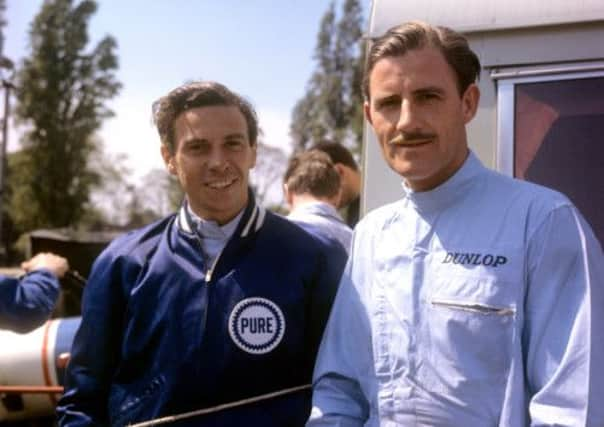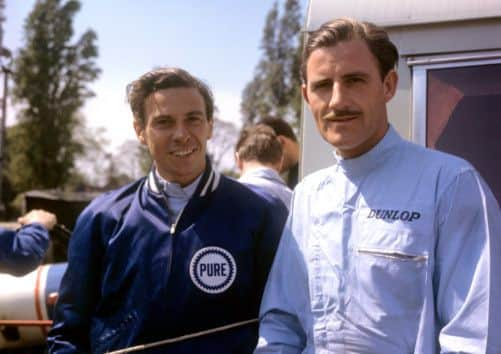Remembering Jim Clark’s 1962 British Grand Prix win


The virtually unbeatable combination of Ross Brawn and Michael Schumacher proved as much at Benetton and Ferrari between 1994 and 2004 and now another English-German combination is following suit. Across at Red Bull, the youngest ever world champion Sebastian Vettel, who turns 26 this week, may be getting all of the plaudits, but it is his combination with the team’s aerodynamics genius Adrian Newey which is the real motor for his success.
Since the urbane Englishman and the young German hooked up at the Austrian team, their domination of the racetrack has been as comprehensive as it was sudden. So imperious has this combination been that since Vettel started racing in cars designed by Newey, he has won more than a third (28 of 82, including seven DNFs) of the grands prix he has started. What is even more revealing is that he has started 46 of those 82 races – significantly more than 50 per cent - from pole position.
Advertisement
Hide AdAdvertisement
Hide AdAs with Brawn, who also designed cars which won World Sportscar titles for Jaguar and made Jenson Button into a world champion, Newey (who shares the dubious distinction of being Jeremy Clarkson’s class mate as a schoolboy) had earned his spurs and was already well on his way to becoming a legend by the time Vettel graduated from kindergarten in Heppenheim. Cars designed by Newey have now won America’s CART championship twice (in successive years, making American icons out of Al Unser and Bobby Rahal) and claimed an Indy 500 win, while the Englishman has racked up nine Formula One Drivers Championships for Williams (Nigel Mansell, Alain Prost, Damon Hill and Jacques Villeneuve), where his cars started on pole in 78 of 114 races and won 59 of them, McLaren (Mika Hakkinen twice) and now Red Bull (Vettel three times).


In golf, the truism has it that you “drive for show, but putt for dough”, and it’s much the same in Formula One, where the driver is actually the more dashing but less important half of the equation.
Even the most outrageously gifted driver stands no chance of winning championships at teams with a poor car designer, but there have been plenty of drivers who have over-performed and won a title thanks to an inspired boffin producing a car that leaves the rest of the grid in its wake.
If that fact is unlikely to have been lost on Vettel – or, for that matter, on Scotland’s Paul Di Resta, who was this week rumoured to be in talks about joining the German at Red Bull when Mark Webber retires at the end of this season – then the F1 history buff is likely to be reminded of a combo which demonstrated the value of a partnership between boffin and swashbuckler at Silverstone 50 years ago this weekend.
It is exactly half a century since the partnership of Lotus’ technical genius Colin Chapman and lead driver Jim Clark, who were to become the greatest driver-designer combination of the modern era until Brawn/Schumacher and then Vettel/Newey, made their great breakthrough at Silverstone.
Driving the Lotus 25, a car designed by Chapman for the 1962 season, Jim Clark had been a runner-up to BRM driver Graham Hill for the Drivers Championship in only his second full year in Formula One and may well have won the title in 1962 had he not experienced untimely mechanical failures. The Borderer’s finest moment in that breakthrough season was winning the British Grand Prix at Aintree, but it was not to be the springboard to greater things.
The next year, 1963, was different. Clark and Chapman had meshed completely and the results were remarkable. “I felt right from the beginning that he was such a good driver, and a man with whom I was so completely at one,” said Chapman of that season. “He was the first driver to actually come to the team as its principal driver, so really we came of age together.”
And what a coming of age. That year Clark won seven of the ten grands prix, a record that stood until Ayrton Senna beat it in 1988, a 16-race season. But it was his win at Silverstone, reckoned both Clark and Chapman, that set him on the way to the first of his two world championships that year. After starting on pole and beating the reigning champion and his closest rival Graham Hill by almost half a minute, Clark had smashed all resistance; he had already won three races and would go on to win another three to win the title with almost twice as many points as second-placed Hill.
Advertisement
Hide AdAdvertisement
Hide AdClark would also go on to win at Silverstone in 1965 and 1967, the former win proving a pivotal moment for the Scot, securing his second drivers championship during the year that established him as one of the greatest drivers of all time. Ironically, though, Chapman says that, despite securing three of his five British Grand Prix wins at Silverstone, Clark never really liked the track, despite its central place in his story. “He never used to like Silverstone very much,” admitted Chapman. “Not because he felt it was a dangerous circuit – he just felt it was an uninteresting circuit.”
Yet by the time of his first Silverstone win in 1963, Chapman and Clark had become a remarkable team with the ability to push each other on to greater heights. “When he started driving for me, he didn’t have the benefit of a formal engineering background,” said Chapman. “But he did have what I can only describe as a very, very good intellect, and he picked up the engineering side of motor racing so rapidly that after a while I was able to interpret his expressions regarding the car, its handling and its requirements and so on. This made it easier for me to develop better motor cars.”
Fifty years after that seminal win at Silverstone, despite his fatal crash at Hockenheim, Germany, in a minor race in April 1968, Clark’s legend and legacy are assured. As well as winning the Indy 500, his record of 25 Formula One wins in 72 starts eclipsed the long-standing mark of Juan Manuel Fangio and etched his name into the history books.
Chapman, though, suffered an altogether different fate. He launched a team which is still winning grands prix, changed F1 forever by making cars lighter rather than giving them bigger engines, pioneered downforce and made lasting technological advances such as the rear axle which still bears his name and single-handedly kick-started the conversion of F1 from a sport for rich gentlemen to a business. Yet despite all of that, he died aged 54 being described by those who knew him best as “a genius and a rogue”, only his fatal heart attack keeping him away from a ten-year stretch for his part in the DeLorean fraud.
Yet for Formula One aficianados, the legacy of the two men is impossible to separate. Virtually all of Clark’s achievements were made with Chapman by his side, while the Englishman was never the same after he “lost my best friend”. As Vettel and Newey may reflect today, such partnerships come along once in a lifetime.